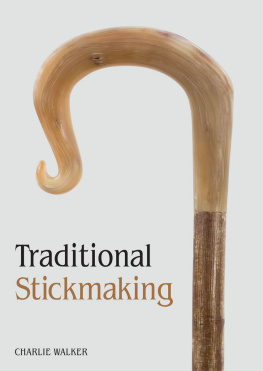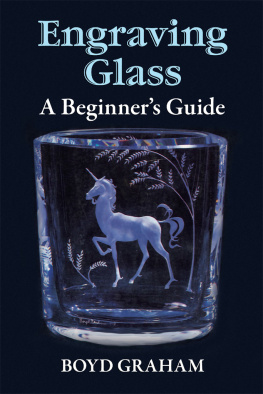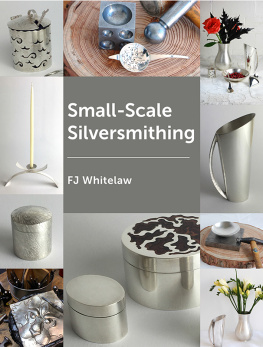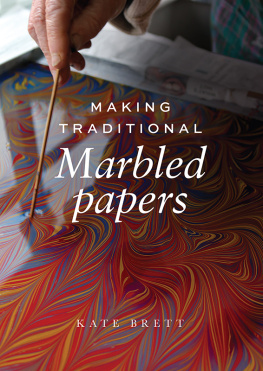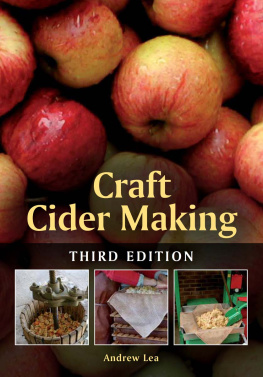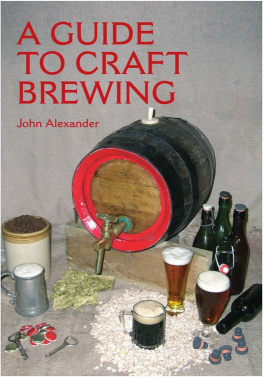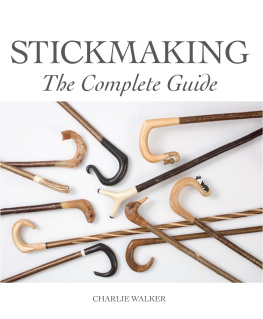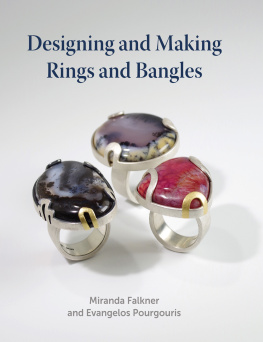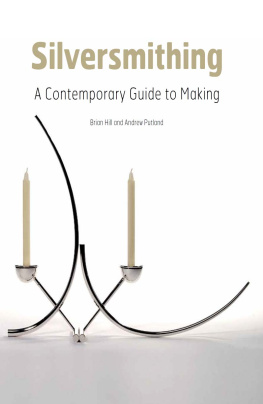Acknowledgements
I would like to thank all the stickmakers who have helped me over the last few years, and especially Gordon Flintoft, who has been my mentor since I began this absorbing hobby. I also wish to remember two very close friends, John Penny and George Russell, who have sadly passed away; they both willingly gave me help and advice, which was very much appreciated. Lastly my thanks to my neighbour Geoff, who drew the two sketches used in this book.

Traditional
Stickmaking
CHARLIE WALKER

THE CROWOOD PRESS
First published in 2016 by
The Crowood Press Ltd
Ramsbury, Marlborough
Wiltshire SN8 2HR
www.crowood.com
This e-book first published in 2016
Charlie Walker 2016
All rights reserved. No part of this publication may be reproduced or transmitted in any form or by any means, electronic or mechanical, including photocopy, recording, or any information storage and retrieval system, without permission in writing from the publishers.
British Library Cataloguing-in-Publication Data
A catalogue record for this book is available from the British Library.
ISBN 978 1 78500 111 6
Frontispiece: A collection of sticks made by the author.
CONTENTS
INTRODUCTION
This book is intended to help anyone wanting to make sticks for work or pleasure using tried and tested techniques with traditional materials. It provides advice on some of the tools and equipment needed to make a variety of sticks and handles out of materials including wood, antler, buffalo and sheep horn, and concludes with a feature on decorating handles. It includes suggestions on methods of storing, straightening and jointing shanks on to handles. There is a series of step-by-step guides on making a range of popular sticks using a variety of materials that will help beginners and experienced stickmakers who want to expand their stickmaking skills. The book is designed to assist people of all abilities to make a stick of their choice; it explains how to make a simple stick with a few basic tools, through to shaping buffalo horn, and bulking and dressing sheep horn to make a classic shepherds crook, which is often regarded as the most difficult type of stick to make. The final chapter focuses on decorating handles using two completely different materials: timber and buffalo horn. The methods used can be applied to the other materials used in this book.
All the sticks featured in this guide have been made by the author using traditional materials. The techniques, jigs and tools used may differ from other stick dressers, but they are based on traditional methods. During my time making sticks I have received help and advice from many expert stick dressers, and I would like to thank all of them for willingly sharing their knowledge and experience with me. Without their help and encouragement I would not have gained the confidence required to write this book on such a fascinating and absorbing craft.
I hope you enjoy your stickmaking and find some of the information in this book helpful.
Charlie Walker

A traditional market stick.
CHAPTER ONE
GETTING STARTED
When reading old stickmaking books and talking with stickmakers, especially the older generations, they often refer to the size of a stick in inches, even though we now live in the metric world. A conversion chart is useful, but to help a little, here are some measurements used in this book: please note they are rounded to the nearest number and are not mathematically exactly correct, but the tolerances quoted are acceptable.
in = 6mm; 5/16 in = 8mm; 3/8 in = 10mm; in = 12mm
1in = 25mm; 1 1/8 in = 30mm; 1in = 32mm
2in = 50mm; 6in = 150mm
36in = 915mm; 48in =1,220mm; 52in = 1,320mm
Basic Styles
Handles
The sketches show two common types of handle: the first is a traditional crook shape and is often referred to as a nose out handle; the second shape is typically used for market and walking sticks, and is generally known as a nose in handle. The parts identified in the sketches are used in the book to describe some of the steps used when making similar styles of handle. Different shapes and styles of handle are featured in the book, and the relevant parts are described.

Stick shapes
Two of the most common methods of fixing stick handles to shanks are shown on the sketches, namely with a dowel joint and a stud joint using threaded rod, and both methods can be used on the sticks featured in this book; alternative methods of making joints are discussed in later chapters. The sketch also shows the ideal position of a collar when fitted to strengthen the joint between a handle and a shank.
In stickmaking there are no stringent measurements to adhere to: there are simply guidelines that give an idea of the size and shape of handles and the height of a stick. The reason that there are no set measurements is because people choose to use sticks of different weights, heights, styles and sizes; thus some people want a tall stick to use as a rifle rest, while others will opt for a shorter stick to provide support when resting during a long walk.
Variations in Style: Crooks
A good example of the variations in one style of stick is the crook; there are many shapes, such as a Brighton crook, a round heel crook, a Tam OShanter crook, a square heel crook, and a leg cleek, and some of these crooks will have a different type of nose, such as a half-curled nose, a curled nose, a looped nose and a decorated nose made on the crook. It would be impracticable to set measurements for the many variations of just one style of stick.
Crooks are made in different sizes because the individual makers interpretation of a crook differs; also the end users will pick different sizes and shapes, as some shepherds prefer a short, light crook while others will choose a heavier and longer crook. Another factor to consider for a working crook is the breed and size of sheep it will have to handle, as sheep differ throughout the country, and shepherds will opt for a crook that is most suitable for use with their particular breed of sheep. Furthermore crooks are now used by some alpaca farmers, who use them to work with their animals.

Leg cleeks.
A leg cleek is a term used for a smaller crook, whose handle is shaped with a tighter gape than a full crook, and where the shank is often shorter than a standard crook; they are used to catch sheep and lambs by their legs when the shepherd wants to separate an individual sheep from the flock; some poultry farmers also use leg cleeks to catch geese and turkeys by their neck. Leg cleeks are the only sticks to have set measurements for the handle, and not all shepherds agree with these sizes; some believe the mouth is too small. The traditional measurement used for the mouth (gape) is an old halfpenny, and for the inside of the crown loop it is an old penny. These equate to 1in (25mm) for the mouth and 1in (30mm) for the inside of the loop; some judges continue to use these sizes when examining show sticks. Commercially made aluminium leg cleeks are often used as working sticks; the one featured has a mouth and loop of the same size, that is 1 1/8 in (27mm). Again this highlights how measurements can vary in the same type of stick.

